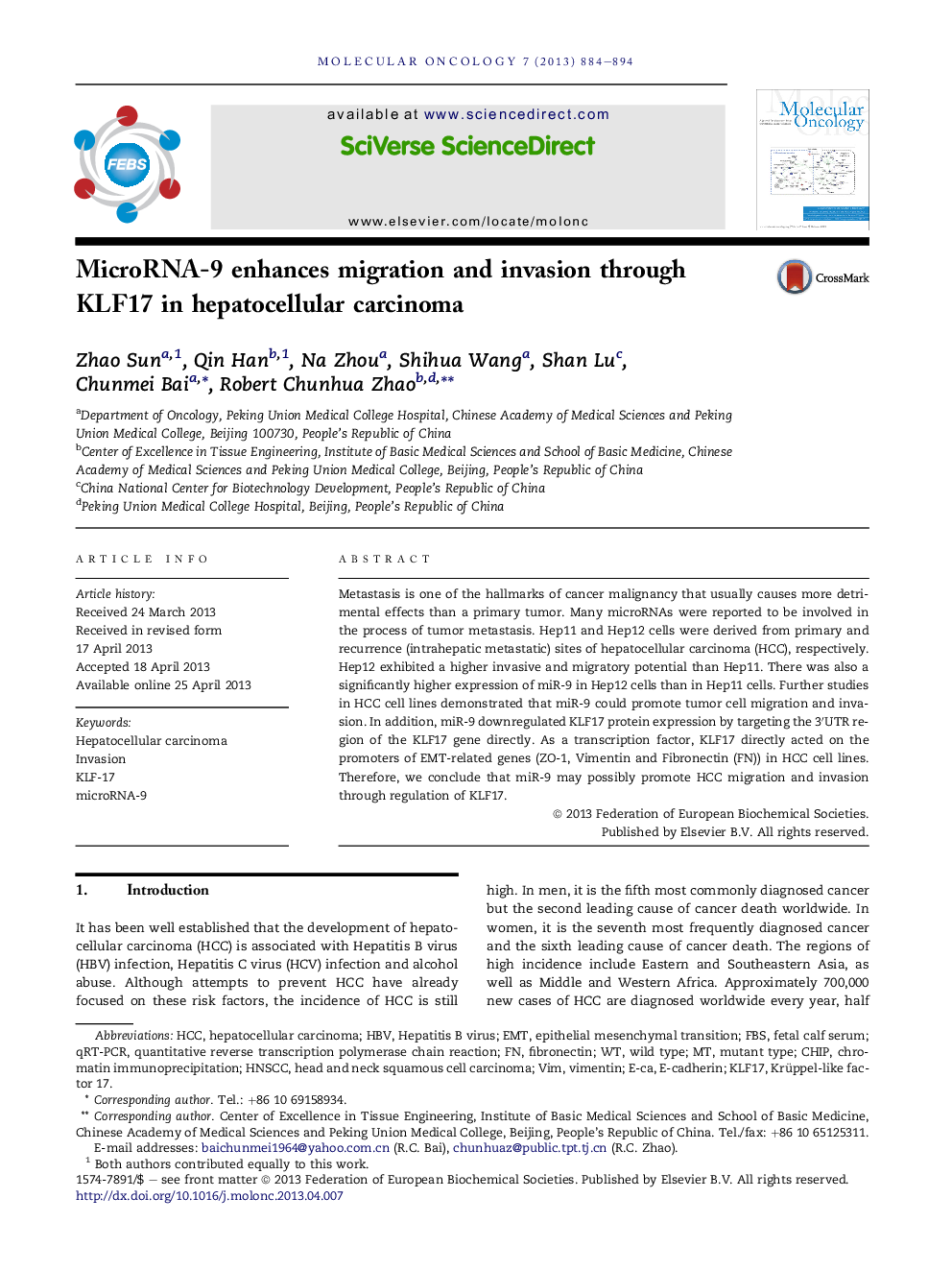| Article ID | Journal | Published Year | Pages | File Type |
|---|---|---|---|---|
| 10914763 | Molecular Oncology | 2013 | 11 Pages |
Abstract
Metastasis is one of the hallmarks of cancer malignancy that usually causes more detrimental effects than a primary tumor. Many microRNAs were reported to be involved in the process of tumor metastasis. Hep11 and Hep12 cells were derived from primary and recurrence (intrahepatic metastatic) sites of hepatocellular carcinoma (HCC), respectively. Hep12 exhibited a higher invasive and migratory potential than Hep11. There was also a significantly higher expression of miR-9 in Hep12 cells than in Hep11 cells. Further studies in HCC cell lines demonstrated that miR-9 could promote tumor cell migration and invasion. In addition, miR-9 downregulated KLF17 protein expression by targeting the 3â²UTR region of the KLF17 gene directly. As a transcription factor, KLF17 directly acted on the promoters of EMT-related genes (ZO-1, Vimentin and Fibronectin (FN)) in HCC cell lines. Therefore, we conclude that miR-9 may possibly promote HCC migration and invasion through regulation of KLF17.
Keywords
qRT-PCRMicroRNA-9VIMHNSCCVimentinFBSE-cadherinHCCepithelial mesenchymal transitionchromatin immunoprecipitationInvasionEMTfetal calf serumFibronectinmutant typewild typeHBVquantitative reverse transcription polymerase chain reactionhepatitis B virusCHiPHead and neck squamous cell carcinomaHepatocellular carcinoma
Related Topics
Life Sciences
Biochemistry, Genetics and Molecular Biology
Cancer Research
Authors
Zhao Sun, Qin Han, Na Zhou, Shihua Wang, Shan Lu, Chunmei Bai, Robert Chunhua Zhao,
